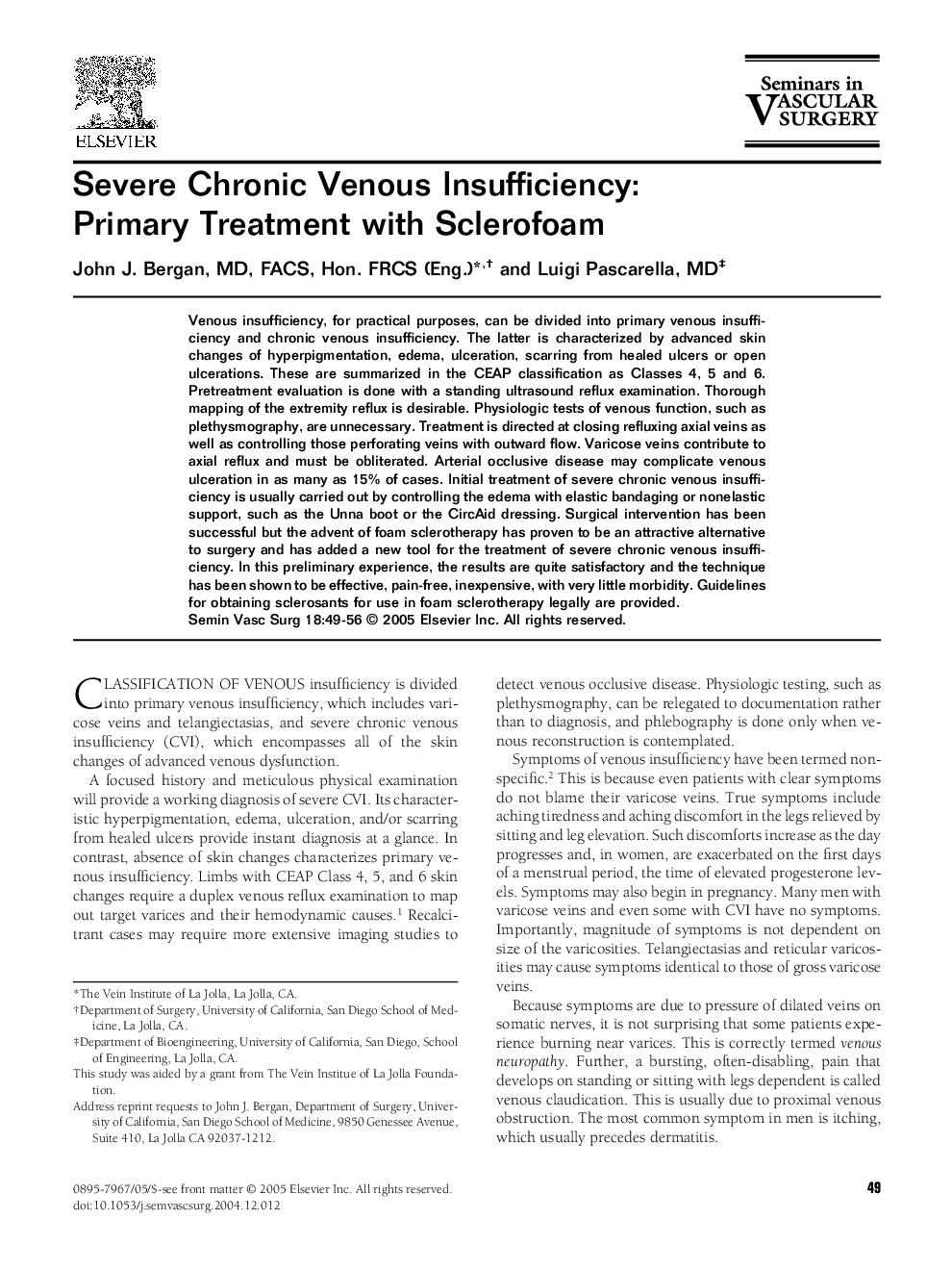| Article ID | Journal | Published Year | Pages | File Type |
|---|---|---|---|---|
| 9184819 | Seminars in Vascular Surgery | 2005 | 8 Pages |
Abstract
Venous insufficiency, for practical purposes, can be divided into primary venous insufficiency and chronic venous insufficiency. The latter is characterized by advanced skin changes of hyperpigmentation, edema, ulceration, scarring from healed ulcers or open ulcerations. These are summarized in the CEAP classification as Classes 4, 5 and 6. Pretreatment evaluation is done with a standing ultrasound reflux examination. Thorough mapping of the extremity reflux is desirable. Physiologic tests of venous function, such as plethysmography, are unnecessary. Treatment is directed at closing refluxing axial veins as well as controlling those perforating veins with outward flow. Varicose veins contribute to axial reflux and must be obliterated. Arterial occlusive disease may complicate venous ulceration in as many as 15% of cases. Initial treatment of severe chronic venous insufficiency is usually carried out by controlling the edema with elastic bandaging or nonelastic support, such as the Unna boot or the CircAid dressing. Surgical intervention has been successful but the advent of foam sclerotherapy has proven to be an attractive alternative to surgery and has added a new tool for the treatment of severe chronic venous insufficiency. In this preliminary experience, the results are quite satisfactory and the technique has been shown to be effective, pain-free, inexpensive, with very little morbidity. Guidelines for obtaining sclerosants for use in foam sclerotherapy legally are provided.
Related Topics
Health Sciences
Medicine and Dentistry
Cardiology and Cardiovascular Medicine
Authors
John J. (FACS, Hon. FRCS (Eng.)), Luigi MD,
